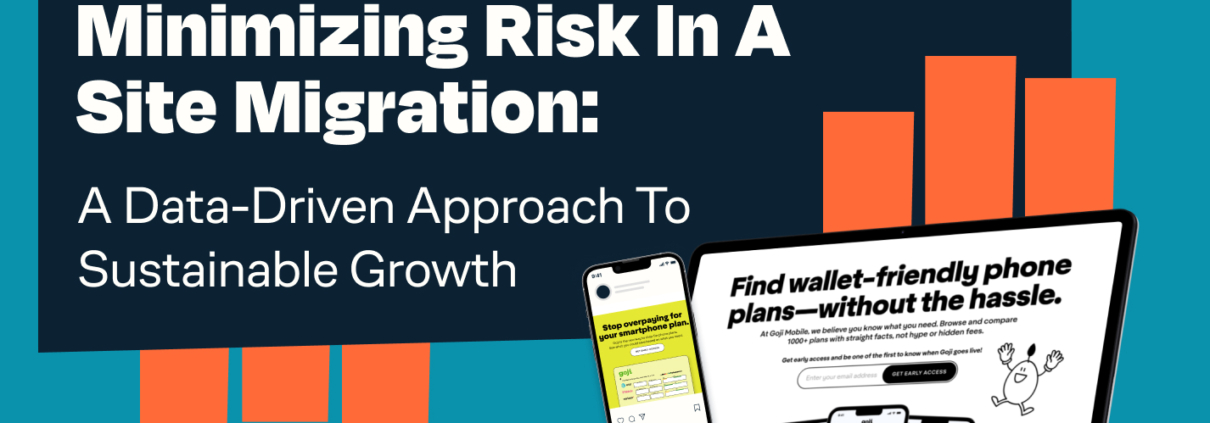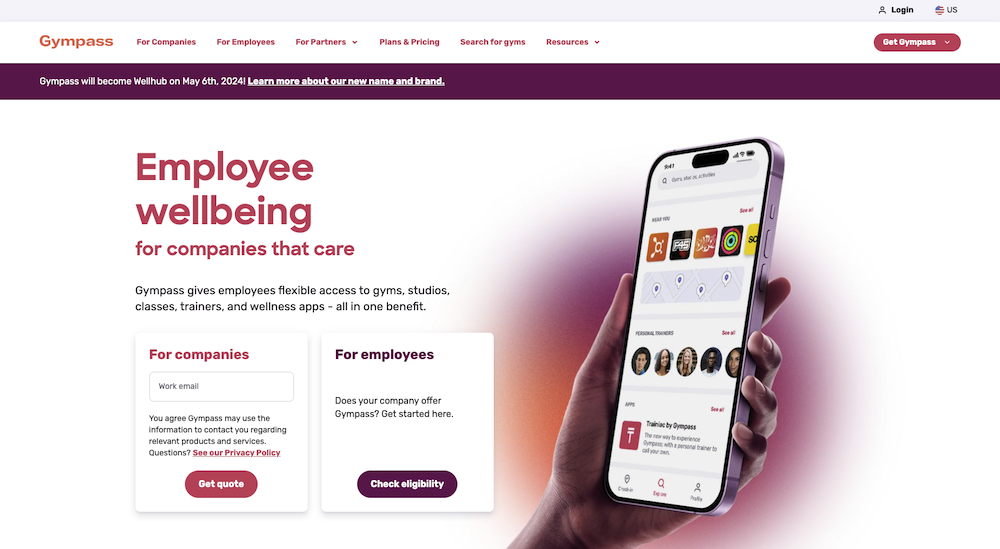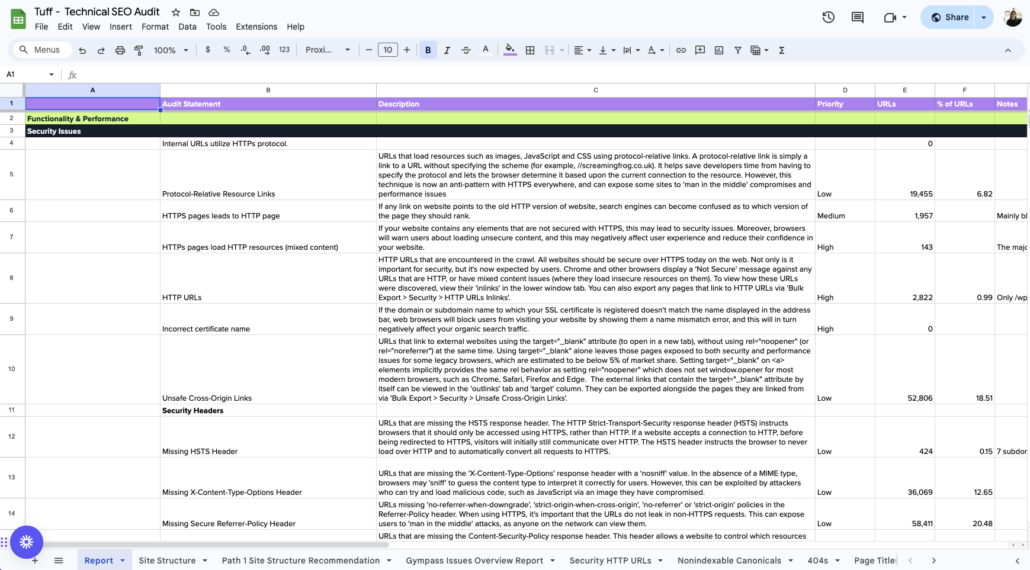Minimizing Risk in a Site Migration: A Data-Driven Approach to Sustainable Growth
Understanding the Migration Landscape
Navigating a site migration requires a nuanced understanding of its various forms and the unique challenges each presents. A site migration, broadly defined, can encompass anything from changing a site’s domain to fundamentally altering its platform or structure. Each type carries potential risks and impacts on SEO performance that need to be managed carefully.
Types of Site Migrations
- Domain Migration: Changing a website’s domain name is often driven by business decisions such as rebranding or company mergers. The challenge lies in maintaining the site’s authority and trust, as the equity built up in the old domain needs to be effectively transferred to the new one without losing ranking power.
- Platform Migration: This involves moving a website to a different CMS or e-commerce platform. It poses substantial risks as it can affect the underlying code and URL structure of a site. Such migrations require meticulous mapping to ensure that all redirects are properly established and that the new platform supports all SEO functionalities as before.
- Site Structure Changes: Revising the architecture of a website can improve user experience and SEO but also poses risks if not done correctly. Changes must be logical, enhance the navigability of the site, and ensure that no existing content is orphaned in the process.
For Gympass, a website with more than 500,000 pages spread across more than a dozen subdomains – some of which are user-generated content (UGC) – this involved a brand and domain migration along with multiple CMS migrations.
Impact on SEO Performance
Site migrations often result in short-term losses in traffic and fluctuations in rankings. The primary reason for this is that search engines need time to process the new configuration and re-evaluate the site’s relevance and authority. Key to mitigating these effects is ensuring that all changes are correctly mapped to the new site, from URL structures to meta tags.
Migration Risk Factors
The concept of “migration risk” involves several critical components:
- Broken Links: If the new site structure leads to broken links, it not only degrades user experience but also impacts the flow of link equity throughout the site.
- Content Gaps: Failing to replicate content accurately on the new site can result in lost keywords and ranking opportunities. Ensuring content is matched or improved in the migration is vital.
- Indexation Issues: New content structures and URLs may confuse search engines, leading to delays in indexing or the indexing of outdated pages.
Google’s Algorithms and Migration
Google’s algorithms prioritize websites that provide a great user experience and accurate, valuable content. Migrations that enhance site speed, mobile responsiveness, and security (e.g., HTTPS) are generally rewarded. However, migrations must be managed to ensure Google can effectively crawl and index the new site. Informing Google through tools like Search Console about the changes can help expedite this process and minimize negative impacts.
Understanding these elements and preparing for them can vastly reduce the risks associated with site migrations, thereby maintaining SEO performance and even setting the stage for improved rankings post-migration.
The Gympass Journey: A Strategic Brand Migration
Our recent partnership with Gympass, a well-known player in the fitness and wellness industry, showcases the need for strategic SEO during a website migration. Gympass faced a common challenge: how to maintain and enhance their online presence during a domain migration. As they prepared to move their website to a new domain, they sought our expertise to ensure a smooth transition without sacrificing organic traffic.
Why Organic Traffic Matters
Organic traffic was one of the main sources of traffic for Gympass and reaching their target audience – fitness enthusiasts, gym-goers, and wellness seekers – hinged on maintaining visibility in search engine results. Whether users were searching for workout tips, gym memberships, or wellness programs, Gympass needed to be front and center.
Pre-Migration Planning
Successful site migration starts long before the actual shift in domains or platforms—it begins with meticulous pre-migration planning. For our collaboration with Gympass, a clear understanding of their current website’s performance was paramount, as was preparing for the potential SEO impacts of the migration. This section details the critical steps we took in the initial stages, setting the stage for a smooth transition.
Analyzing Current Website Performance and Traffic
The first step in any site migration plan involves a thorough analysis of the existing website’s performance. For Gympass, this meant diving deep into their analytics to understand traffic sources, user behavior, and key performance indicators such as page load times, bounce rates, and conversion rates. Utilizing tools like ScreamingFrog, Google Search Console, and SEMrush, we were able to gather a comprehensive picture of the site’s health and areas where improvements were needed.
This initial analysis serves multiple purposes:
- Identifying High-Value Pages: Ensuring that pages with the highest traffic and engagement are prioritized during the migration to preserve their SEO value.
- Benchmarking: Establishing performance benchmarks helps in measuring the impact of the migration and setting realistic recovery goals.
Predictive Modeling of Traffic Dips and Recovery Post-Migration
Understanding that site migrations often result in temporary traffic dips, we employed predictive modeling to forecast these changes for Gympass. This involved analyzing historical data from previous migrations, industry benchmarks, and the specific changes being implemented. Our model took into account various scenarios, from best-case to worst-case, enabling us to develop a robust contingency plan.
The predictive model helped in:
- Setting Expectations: Clear communication with Gympass about potential traffic impacts and recovery timelines.
- Resource Allocation: Planning the necessary resources for immediate post-migration actions to mitigate any negative effects.
Preparing a Comprehensive SEO Audit Checklist
A comprehensive SEO audit was crucial to ensure that no stone was left unturned. This audit included checks for:
- Technical SEO: Ensuring that the website’s architecture was conducive to search engine crawling and indexing. This covered aspects like URL structure, the use of canonical tags, redirects, and the implementation of XML sitemaps.
- On-Page SEO: Analyzing content relevance, keyword optimization, and meta tags to ensure that all pages were optimized for maximum visibility.
- Off-Page SEO: Reviewing the site’s backlink profile to safeguard against losing valuable backlinks during the transition.
The SEO audit checklist served as a roadmap, guiding every step of the migration process to ensure that SEO best practices were adhered to, thereby minimizing risks and setting the stage for a successful transition. With these preparations in place, Gympass was not just ready for a domain change but was positioned for success in its aftermath, leveraging enhanced site performance and improved SEO strategies.
The Audit Spreadsheet: A Behind-the-Scenes Look
We’re sharing the very spreadsheet we used to run the technical SEO audit – a comprehensive spreadsheet that allowed us to build a map of all website URLs, identify issues, and develop mitigation strategies.
Running the Numbers: Modeling Scenarios
Our analysis focused on Gympass’s three key international markets: Brazil, Mexico, and the United States. We dissected the percentage of organic traffic attributed to branded versus non-branded search terms and found that the overwhelming majority of organic traffic originated from branded search queries. Since the brand name would be changing, we factored this into our organic traffic predictions.
Armed with this insight, we rolled up our sleeves and dove into the data. By modeling potential scenarios based on the expected dip in traffic during the migration, we could anticipate the impact on Gympass’s online presence and how to best prepare.
Behind the Scenes: Audits, Redirects, and Best Practices
Our tactical approach involved:
- Auditing Subdomains and Main Domain: We audited all 13 subdomains and the main domain. Our goal? Identify pages with high organic traffic and uncover any technical SEO issues.
- Redirect Maps: We meticulously crafted redirect maps for every subdomain and the main domain. Ensuring smooth transitions from source URLs to final destinations was paramount.
- Loop-Free Redirects: No tangled webs here! We identified redirect loops and chains and built the redirect maps from the source URL to the final URL, ensuring users seamlessly reached their desired content.
- CMS-Specific Best Practices: Each subdomain had its unique content management system (CMS) – HubSpot, WordPress, Storyblok, Unbounce, etc.,. We tailored migration guidelines to suit each platform.
- Robots.txt and XML Sitemap: A new Robots.txt file and an updated XML sitemap were essential for search engine crawlers.
- Technical Redirects: We followed best practices – server-side redirects, testing with 302, and then making them permanent 301 redirects.
- Collaboration with Developers: Our close partnership with Gympass’s development team ensured flawless execution.
Key Takeaways and Best Practices
From our extensive work with Gympass, valuable insights emerged that not only refined our approach to SEO but also provided us with a blueprint for future migration projects. Understanding the nuances of each step, from planning through execution and beyond, is crucial for maintaining the SEO value and ensuring the digital growth of any business.
Key Learnings from the Gympass Case Study
The Gympass migration underscored several critical elements:
- Thorough Preparation: Meticulous planning and testing helped anticipate potential issues, and minimizing disruptions in user experience and search rankings.
- Communication: Keeping all stakeholders informed at every phase ensured that any unforeseen challenges were swiftly addressed without significant delays.
- Flexibility: Adaptability in response to real-time data and feedback was essential for optimizing the migration process and outcomes.
Essential Considerations for Site Migration
Regardless of the industry or business goals, certain considerations remain paramount during any site migration:
- Risk Management: Identifying and managing risks proactively can significantly mitigate potential negative impacts on SEO.
- User Experience: Ensuring that the site remains user-friendly post-migration is vital for retaining and growing traffic.
- SEO Continuity: Maintaining SEO performance requires careful handling of all site elements that impact search visibility.
Actionable Best Practices
For companies planning a site migration, adhering to the following best practices is essential:
- Conduct a Comprehensive Technical SEO Audit Before Migration: Assess your current SEO landscape to identify strengths and weaknesses. This audit should guide the migration strategy to avoid losing any SEO equity.
- Develop a Detailed Content Migration Plan: Ensure all valuable content is accurately migrated to the new site. This plan should prevent any loss of content that could affect your site’s information hierarchy and keyword rankings.
- Implement Server-Side 301 Redirects for All Old URLs: This is crucial for transferring the existing SEO value to the new URLs and for providing a seamless user experience by redirecting visitors to the appropriate content on the new site.
- Update Your Sitemap and Resubmit It to Search Engines: Quickly updating and resubmitting the sitemap helps search engines discover and index the new structure more efficiently.
- Monitor Performance Closely Post-Migration: Use tools like Google Analytics and Search Console to monitor the site’s performance. Quick identification and resolution of issues like traffic drops or page errors can prevent long-term negative impacts.
The Ongoing Importance of SEO After a Site Migration
Post-migration, continuous SEO efforts are necessary to solidify and enhance the site’s position in search rankings. Regular content optimization, proactive link building, and ongoing technical checks ensure the site remains competitive and relevant. This ongoing commitment to SEO not only helps in recovering from any short-term losses during migration but also in capitalizing on new opportunities for growth and visibility.
By integrating these insights and best practices into your migration strategy, your business can navigate the complexities of site migration while preserving and enhancing its online presence.
Ready to Elevate Your SEO Strategy?
At Tuff, we understand that the landscape of digital marketing is continuously changing. With increasing advertising costs, it’s more crucial than ever to invest in sustainable SEO practices that not only preserve but enhance your digital footprint. Whether you’re contemplating a site migration or looking to tweak your SEO strategy to align with the latest Google updates, our team is equipped with the expertise and experience to guide you through.
We’re eager to help you uncover the full potential of your website and ensure that your SEO strategy is robust, responsive, and results-oriented. If you’re considering any technical changes or simply want to learn more about how recent Google updates might impact your site, don’t hesitate to reach out.

Derek is a digital marketer based in Boston, Massachusetts with almost a decade of hands-on SEO experience. He finds it meaningful, challenging, and exciting to develop, test, and implement new SEO strategies. When he’s not auditing websites and optimizing content he’s usually backpacking and exploring new cultures.







